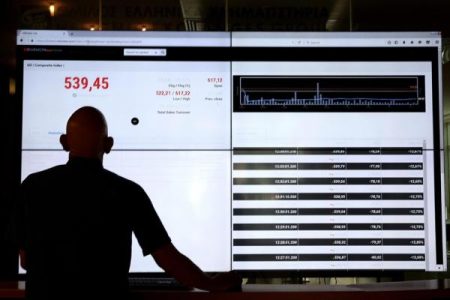Applied Materials (NASDAQ:AMAT) Q4 Sales Beat Estimates But Stock Drops
Maker of machinery employed in semiconductor manufacturing, Applied Materials (NASDAQ:)
beat analysts’ expectations in Q4 FY2023, with revenue flat year on year at $6.72 billion. Guidance for next quarter’s revenue was also better than expected at $6.47 billion at the midpoint, 1.5% above analysts’ estimates. Turning to EPS, Applied Materials made a non-GAAP profit of $2.12 per share, improving from its profit of $2.03 per share in the same quarter last year.
Is now the time to buy Applied Materials? Find out by reading the original article on StockStory.
Applied Materials (AMAT) Q4 FY2023 Highlights:
- Revenue: $6.72 billion vs analyst estimates of $6.50 billion (3.4% beat)
- EPS (non-GAAP): $2.12 vs analyst estimates of $1.99 (6.4% beat)
- Revenue Guidance for Q1 2024 is $6.47 billion at the midpoint, above analyst estimates of $6.37 billion
- Free Cash Flow of $1.25 billion, down 46.5% from the previous quarter
- Inventory Days Outstanding: 147, down from 153 in the previous quarter
- Gross Margin (GAAP): 47.1%, up from 45.9% in the same quarter last year
“Applied Materials delivered record revenue, earnings and cash flow in fiscal 2023 and is outgrowing the wafer fabrication equipment market for the fifth year in a row,” said Gary Dickerson, President and CEO.
Founded in 1967 as the first company to develop tools for other businesses in the semiconductor industry, Applied Materials (NASDAQ:AMAT) is the largest provider of semiconductor wafer fabrication equipment.
Semiconductor ManufacturingThe semiconductor industry is driven by demand for advanced electronic products like smartphones, PCs, servers, and data storage. The need for technologies like artificial intelligence, 5G networks, and smart cars is also creating the next wave of growth for the industry. Keeping up with this dynamism requires new tools that can design, fabricate, and test chips at ever smaller sizes and more complex architectures, creating a dire need for semiconductor capital manufacturing equipment.
Sales GrowthApplied Materials’s revenue growth over the last three years has been mediocre, averaging 16.4% annually. But as you can see below, its revenue declined from $6.75 billion in the same quarter last year to $6.72 billion. Semiconductors are a cyclical industry, and long-term investors should be prepared for periods of high growth followed by periods of revenue contractions (which can sometimes offer opportune times to buy).
Even though Applied Materials surpassed analysts’ revenue estimates, this was a slow quarter for the company as its revenue dropped 0.4% year on year. This could mean that the current downcycle is deepening.
Applied Materials looks like it’s headed into the trough of the semiconductor cycle, as it’s guiding for a year-on-year revenue decline of 4% next quarter. Analysts are also estimating a 0.7% decline over the next 12 months.
Product Demand & Outstanding InventoryDays Inventory Outstanding (DIO) is an important metric for chipmakers, as it reflects a business’ capital intensity and the cyclical nature of semiconductor supply and demand.
In a tight supply environment, inventories tend to be stable, allowing chipmakers to exert pricing power.
Steadily increasing DIO can be a warning sign that demand is weak, and if inventories continue to rise, the company may have to downsize production.
This quarter, Applied Materials’s DIO came in at 147, which is 3 days above its five-year average. These numbers suggest that despite the recent decrease, the company’s inventory levels are higher than what we’ve seen in the past.
Key Takeaways from Applied Materials’s Q4 Results
With a market capitalization of $130 billion, a $6.87 billion cash balance, and positive free cash flow over the last 12 months, we’re confident that Applied Materials has the resources needed to pursue a high-growth business strategy.
We were impressed by how significantly Applied Materials blew past analysts’ EPS expectations this quarter. We were also excited its revenue outperformed Wall Street’s estimates, driven by strong results in all three of its reportable segments (semiconductor systems, applied global services, and display and adjacent markets). We also enjoyed seeing the company provide revenue and EPS guidance for next quarter that beat analysts’ estimates – especially during a time when many semiconductor companies are providing cautionary outlooks. Overall, we think this was a strong quarter that should satisfy shareholders. The market was likely expecting more, however, and the stock is down 6.5% after reporting, trading at $144.7 per share.
The author has no position in any of the stocks mentioned in this report.
Read the full article here














